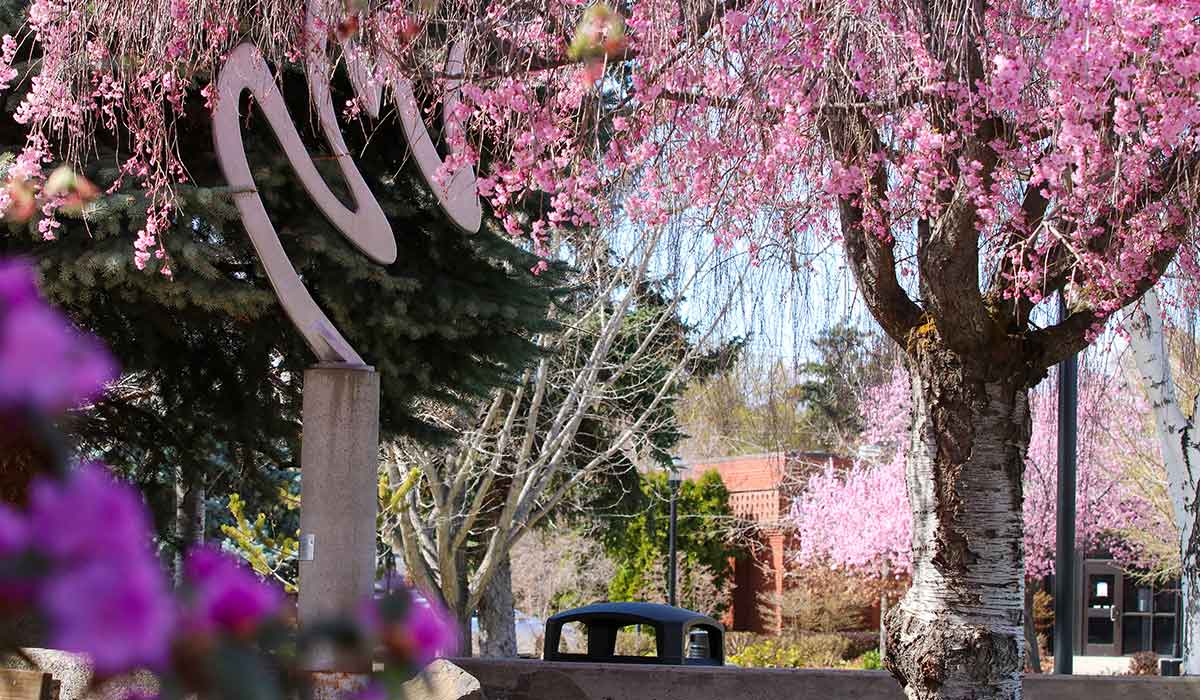Faculty members from Central Washington University and Yakima Valley College (YVC) came together this spring to publish a Council for Undergraduate Research journal article that examined the insights gleaned from a five-year observation of YVC’s ongoing Summer Undergraduate Research Experience (SURE).
Appearing in the spring edition of Scholarship and Practice of Undergraduate Research (SPUR), “Development and Assessment of an Undergraduate Research Program at a Two-Year, Rural, Hispanic-Serving Institution: The Essential Role of Partnerships” examines the crucial role community colleges play in preparing students for a future in STEM (science, technology, engineering, and math) research.
The SURE partnership between CWU and YVC took advantage of National Science Foundation (NSF) funds to host a summer research program for undergraduates interested in STEM research at the university level. The assessment found high transfer, graduation, and continued enrollment rates for participants, along with a deeper firsthand knowledge of the scientific process.
Audrey Huerta, co-author of the article and a CWU professor of geological sciences, said the project was part of an ongoing effort to make STEM education more accessible to underserved communities.
“Part of the challenge with a community college population is that life, job, and family can derail individuals from being able to continue,” Huerta said. “That’s one of the things that’s happening for those individuals who are really engaged in active learning. Providing hands-on experiences and opportunities to apply what they’ve learned really motivates them to stay on that educational pathway.”
SURE is one of few Undergraduate Research Experiences (UREs) held annually at a community college, as opposed to a state university. Community colleges historically have had difficulty securing NSF grants for this type of program, but YVC biology instructor Matthew Loeser says CWU’s involvement allowed his institution to overcome this hurdle.
“The funding of community colleges is unusual at the NSF,” said Loeser, a co-author of the SPUR article. “If you look at the last 20 years or so, the vast majority of their funding is going to state universities, partly because universities are known for having research students and community colleges are not.
“At some point, we started discussing how CWU could fund students doing research at YVC,” he added. “This ended up being through NSF funding.”
Thanks to that funding, SURE has been steadily growing since 2012, offering more research opportunities in a broader range of disciplines every year. What started as a biology and chemistry summer program with six students in 2012 had expanded to offer eight different fields of study to 30 students in 2019.
Enrollment dropped in 2020 due to the pandemic, but the program remains funded, Loeser said. He hopes the publication of SURE’s achievements will bring more attention to the need for inter-institutional partnerships at the university level.
“It really shows the importance of having personal relationships among individuals at the two institutions,” Loeser said. “I believe that if I had not had some prior communication with CWU STEM faculty, we would not be where we are right now.”
Makaylah Newkirk, co-author of the article and a data analyst at YVC, had personal experience with the transfer process between YVC and CWU.
“There was a lot of support on both sides,” she said. “The connection between faculty was a big help for me, especially though this research program.”
SURE often serves as the participants’ first foray into the world of academic research, which is part of the program’s intended purpose. Rather than jumping into a degree with both feet, SURE students can get a feeling of what life in academia is like, then make their decisions based on that experience.
Kara Gabriel, co-author of the article and a CWU psychology professor, says SURE can have value even if the participants choose not to continue a career in research.
“It’s okay if this is the experience that makes you decide that you don’t want to do this kind of research in the future,” Gabriel said. “Just talking to your professor and conducting the research gives you the confidence to make choices about your life and your future career.”
All four authors emphasized the importance of the hands-on aspect of the research. The report, and subsequent focus groups, found that students were more likely to be interested in research that could potentially have an impact on themselves or their hometowns.
“You want projects that they feel they can bring back to their communities, and work within their communities to support,” Gabriel said. “That was a big push YVC did with the other faculty when assigning projects.”
As an entry point into STEM research at a community college, SURE has proven to be a success, as documented in the SPUR article published by Loeser, Newkirk, Gabriel, and Huerta. The authors hope the publication, and the data it contains, will serve as an academic precedent for other state institutions that are seeking partnerships with local community colleges, and vice-versa.
Huerta believes the success of the program can be attributed to students and faculty who are motivated to make a difference in their chosen field.
“They were in this because they wanted that experience, and that intellectual curiosity,” she said. “It wasn’t just to check a box.”
Rune Torgersen, CWU Department of Public Affairs, rune.torgersen@cwu.edu.
